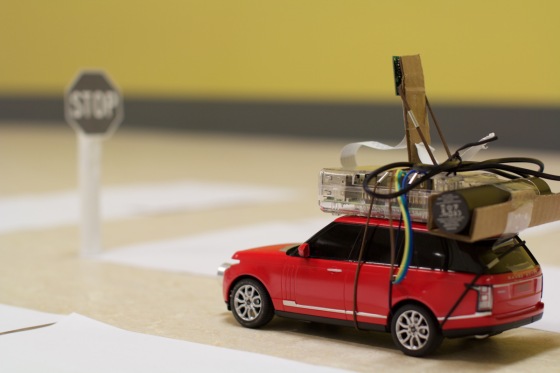
Alex Eames has just launched his latest Kickstarter. Following successful campaigns for the RasPiO GPIO Ruler and RasPiO Duino, he is now raising funds for the RasPiO Pro HAT.
Key features
This HAT’s key features are as follows:
- protected GPIO ports to prevent damage to the Pi and components if you wire things up incorrectly
- numerically-ordered GPIO ports
- fully assembled – requires no soldering to use in its basic form
- includes a 170pt mini-breadboard to build your circuits on
- provides extra GPIO break-outs for un-protected tinkering
- 330 ohm resistors pre-installed on each GPIO port so you can use LEDs without additional resistors
Alex is also planning some RasPi.TV-style tutorials and written examples to show you how to get the best out of the HAT.
First look
Alex let me have a hand-soldered prototype of the board to play around with. It’s a great idea to put all the GPIO pins in numerical order (it uses the BCM pin assignments) as it removes some of the confusion. Plus, because it uses the BCM pin assignments it means that it’s ready-to-use with the new GPIO Zero library. In fact, GPIO Zero is what I used with the example you can see wired up below. I’ve plugged the positive end of 4 LEDs (on the left) into GPIO pin header holes and then the negative end into the breadboard. I’ve then used a jumper to connect Ground to that breadboard row. I’ve also shown, with the yellow LED, that you can just bridge directly from Ground to a GPIO input pin if you want to. The GPIO Zero code was, of course, very straight-forward and I had an example up-and-running in no time. I think that is one of the key selling points of the HAT – it makes doing simple things even simpler, especially LEDs where, using the HAT, you don’t need additional resistors. I can imagine returning to the HAT time and again when I want to prototype circuits, or if I just want to play around with a component like a temperature sensor. I can also imagine a lot of schools using it rather than getting hold of individual breadboards – it’s compact, provides a way to keep the circuitry tidy and makes logical sense.

Backing the Kickstarter
If you’re quick, you can get hold of a Pro HAT for just £10 plus delivery (just £1 if you’re in the UK) which is the Earlybird price. After that, it rises to £12 plus delivery. It’s great value for what is one of the most flexible tools out there. Go to the Kickstarter.





